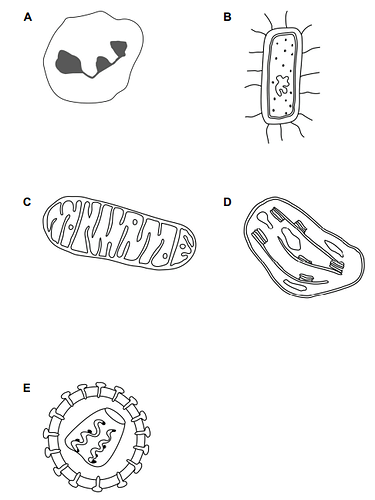Which one of the diagrams (not drawn to scale) represents a structure that is formed by mitosis ?
The correct answer is A : the immune cell.
What is mitosis ?
It is a type of cell division that begins with the duplication of the DNA.
Furthermore, the daughter cells are genetically similar to the mother cell : a gene A with the allele y is transmitted to the daughter cells.
Its purpose is to ensure cell multiplication for tissue repair or growth.
In other words, from a single diploid mother cell (2n), 2 diploid daughter cells (2n) are obtained.
A diploid cell has 2 complete sets of chromosomes, usually written as being a 2n cell, as opposed to a haploid cell, that only has 1 set of each chromosome, and written as a n cell.
In which cells does mitosis occur ?
It only occurs in eukaryotic cells : as opposed to prokaryotic cells, their genome is stored inside a nucleus. There are also only 3 types of eukaryotic cells that undergo mitosis :
- somatic cells which are what we call any cells that aren’t sperm or egg cells
- adult stem cells
- cells in the embryo
Therefore, it is important to be able to recognize the different structures :
-
A looks like it is an immune cell (a neutrophil) : it si a somatic cell and therefore undergoes mitosis
-
B looks like a bacteria : it is neither for these types of cells. Bacteria reproduced by binary fission and not mitosis.
-
C looks like a mitochondrion : it is an organelle and not a cell. They divide by mitochondrial fission and not mitosis.
-
D looks like a chloroplast : it is an organelle and not a cell. Similarly to the mitochondrion, they divide by fission and not mitosis.
-
E looks like a virus : they do not undergo mitosis. Instead, they replicate through a 6 step process :
- attachment to the host cell
- penetration of the host cell by endocytosis
- uncoating of the external proteins to release the genomic nucleic acid
- gene expression and replication
- assembly of the new virions
- release
